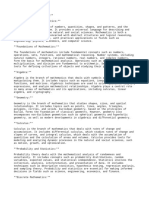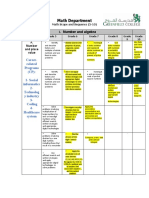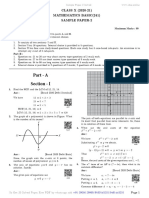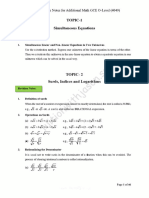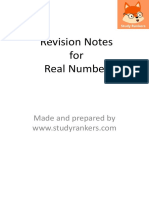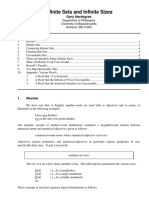0% found this document useful (0 votes)
56 views7 pagesComprehensive Mathematics Fundamentals Guide
The document is a comprehensive guide to mathematics fundamentals, covering key topics such as number systems, algebra, geometry, trigonometry, calculus, probability, statistics, linear algebra, and discrete mathematics. It includes real-life applications, practice problems with solutions, and a final revision summary to aid in mastery of the subject. The guide emphasizes the importance of mathematics in various fields and provides foundational knowledge for logical reasoning and problem-solving.
Uploaded by
kannan.c.j.2022.cseCopyright
© © All Rights Reserved
We take content rights seriously. If you suspect this is your content, claim it here.
Available Formats
Download as PDF, TXT or read online on Scribd
0% found this document useful (0 votes)
56 views7 pagesComprehensive Mathematics Fundamentals Guide
The document is a comprehensive guide to mathematics fundamentals, covering key topics such as number systems, algebra, geometry, trigonometry, calculus, probability, statistics, linear algebra, and discrete mathematics. It includes real-life applications, practice problems with solutions, and a final revision summary to aid in mastery of the subject. The guide emphasizes the importance of mathematics in various fields and provides foundational knowledge for logical reasoning and problem-solving.
Uploaded by
kannan.c.j.2022.cseCopyright
© © All Rights Reserved
We take content rights seriously. If you suspect this is your content, claim it here.
Available Formats
Download as PDF, TXT or read online on Scribd
/ 7




























